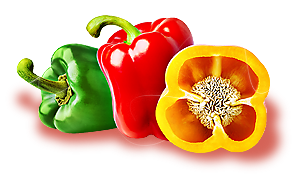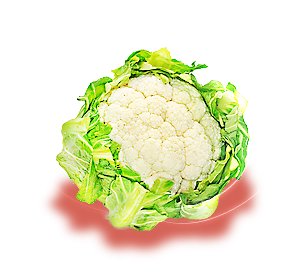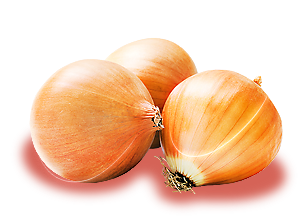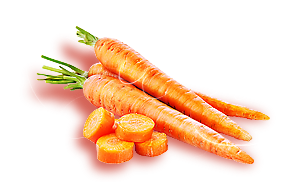
Pepper
Every year we can observe the increase in the production of pepper grown under cover. Pepper in unheated foil tunnels cover the area of about 850 ha and over 80% of the production is localized near Radom, in central Poland. The most popular is red pepper (Yecla and Salomon varieties) and yellow pepper (Shanghai and Sprinter varieties), as well as green pepper. White pepper (Belladonna variety) and cone-shaped pepper (Flexum variety) is also available.
Because clients are mainly interested in the block type peppers, most of the production is oriented to „block A” fruits, that is California Wonder. Peppers in 5 kg cartons, calibers 70-90 and 80-100 mm are bought most frequently.
Cauliflower

Poland is a significant producer of cauliflower, both for fresh market and for processing. The average level of production destined for freezing reaches about 50 000 tons. Dessert cauliflower production reaches about 210 000 tons. It is grown on about 11 000 ha, and with average production of about 17-20 tons per ha.
Regions of cauliflower production are almost the same as regions of the production of cabbage type vegetables. The country’s production centers are localized near Zamość, Kraków and Łęczyca. Cauliflower is available in 2 sizes, 6 or 8 heads in carton or wooden box.
Onion

Poland with annual crops of around 600 000 tons is Europe's third biggest onion producer, following Spain and Holland. Onion is very sensitive to weather conditions that’s why periods of excess supply often alternate with periods of onion shortages.
Red onion – onion with dark red skin and white flesh tinged with red.
Yellow onion – onion with skin and flesh of white and yellow colour.
Garlic onion – white onion with characteristic garlic flavor.
Packaging method: onion is offered in 20, 15, 10, 5 kg raschel sacks and in 1 and 2 kg plastic bags.
Carrot

Carrot is one of the basic vegetables cultivated in Poland. Carrot production covers about 30 000 ha, which is the third biggest vegetable production, following cabbage and onion. Long traditions of carrot cultivation have the regions of Wielkopolska, Mazowsze and Kujawy. The annual production exceeds 900 000 tons, what makes Poland the leader among the countries producing carrots in Europe.
Packaging method: carrot is offered in 5 and 10 kg raschel sacks and in plastic bags, and 1 kg flowpacks.


